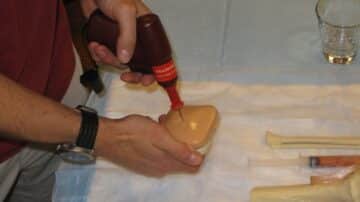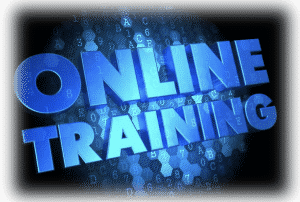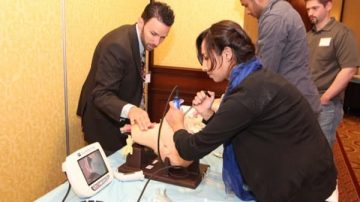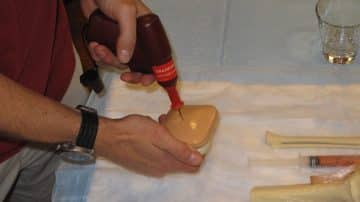Five to 15% of trauma patients arrive in emergency rooms in shock. From June 2020 to April 2022, less than 10% of admitted patients met the criteria for multifactorial shock in the early phase, putting them at a significantly higher…
Read MoreIntraosseous lines are commonly associated with decreased return of spontaneous circulation or ROSC rates compared to peripheral IV access. Intraosseous lines have also been linked to decreased survival after out-of-hospital and in-hospital cases of cardiac arrest in comparison to IV…
Read MoreMore Articles – Arterial line, Cardiovascular diseases, Central line, Chest Tube, Emergency Procedures, Endotracheal Intubation, Events, FAST Exam, Intraosseous line, King Tube, Laryngeal Mask Airway, Lumbar Puncture, Mechanical Ventilation, Medical General, medical procedures, Needle Decompression, Paracentesis, Procedural Sedation, RUSH Exam, Thoracentesis, Ultrasound-Guided Peripheral IV
Physicians, physician associates (PAs), and nurse practitioners (NPs) need to be adept in a range of essential medical emergency procedures that they must perform in an inpatient settings. These bedside procedures are accomplished readily, but only if you have the…
Read MoreA Continuing Medical Education (CME) Course is designed for doctors, nurses, nurse practitioners, physician associates and other healthcare professionals who want to learn more about certain topics in medicine. The primary goal of CME is to improve the quality of…
Read MoreThe emergency room (ER) is an essential area of any hospital because it often deals with life-and-death situations. How medical personnel respond significantly affects the prognosis of patients who are in need of urgent care. As a medical professional, experience…
Read MoreA recent article summarizes a cross-sectional survey aimed at determining the processes in place to assess the procedural competency of academic emergency medicine attendings.[i] The survey was sent to the 39 ACGME-accredited Emergency Medicine programs in the U.S. and had…
Read MoreIntraosseous vascular access using the EZ-IO device is a wonderful option for emergency access in the hospital or pre-hospital setting. Intraosseous lines are easy to place with proper training and can serve as emergency vascular access during cardiac arrest or…
Read MoreIntraosseous line use has increased significantly since the advent of the battery powered intraosseous drill. In surveying providers at courses over the years, we have seen a steady rise in the number of providers with access to the intraosseous drill. …
Read MoreCategories
- ACLS (1)
- Arterial line (33)
- Cardiovascular diseases (77)
- Central line (55)
- Chest Tube (39)
- Dermatology (4)
- Emergency Procedures (138)
- Endocrinology (6)
- Endotracheal Intubation (36)
- Events (24)
- FAST Exam (12)
- Featured (112)
- Featured Procedure (42)
- Gastrointestinal diseases (32)
- Ginecology (3)
- Glidescope Intubation (21)
- Hematology (33)
- Hospital Procedures (85)
- Infections (32)
- Intraosseous line (8)
- King Tube (27)
- Laryngeal Mask Airway (18)
- Lumbar Puncture (36)
- Mechanical Ventilation (34)
- Medical General (95)
- medical procedures (258)
- Needle Decompression (6)
- Nephrology (11)
- Neurological diseases (12)
- Oncology (4)
- Paracentesis (32)
- Pericardiocentesis (3)
- Procedural Sedation (19)
- Respiratory diseases (85)
- RUSH Exam (8)
- Thoracentesis (37)
- Traumatology (24)
- Travel (27)
- Ultrasound-Guided Peripheral IV (13)








